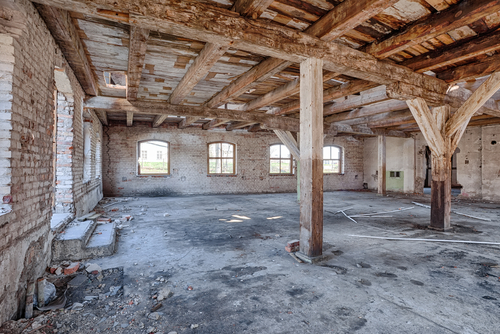Aside from the eco-friendly qualities, reclaimed wood floors add a unique and special character to your space.
The fact that you are making an environmentally-conscious choice about what’s going to go in your home is a good option. Also, rather than going for wood floors from newly harvested timber, why not go for something with a history behind it?
What Are Reclaimed Wood Floors?
Simply put, reclaimed wood is wood that has been rescued or salvaged from decay, destruction, or non-use for the purpose of another practical use for it. This type of wood includes weathered bard siding, railroad tiles, old bowling alleys, sunken logs, and old factory beams.
Reclaimed wood even includes logs from trees that fell because of a storm or those removed from orchards or forests because of decreasing fruit production or expansion of urban communities. These logs would have otherwise been left to decay or be destroyed.
Instead of burning, left to rot, or stuffed in landfills, the wood is reclaimed and transformed into other products such as reclaimed wood floors.
In many cases, reclaimed wood flooring had some other practical purpose in its previous life. In fact, many of the old buildings across the country used wood as the primary structural material. Today, these buildings are dismantled due to old age other structural issues- making their wood turned into repurposed flooring.
Sourcing Reclaimed Wood

The manufacturers that produce this type of wood reclaim it from several sources. Sourcing the forest from different places results in procuring a variety of wood species options.
Many companies get wood from within their local areas. Others take advantage of abandoned factories or old bards.
Some travel the country, or even the world, to obtain different species of wood that are only indigenous to that area.
As you know, different regions will produce different types of trees, consequently yielding different species of wood. For instance, the Midwest may yield more oak, elm, or American chestnut, while the Pacific Northwest is the source of birch, Douglas fir, or Western red cedar.

And since most of Asia is experiencing fast-paced modernization, many of the older structures and buildings are being demolished.
Before they get taken down, the wood is recycled. The wood species indigenous to parts of Asia provide vast diversity. Many of them complement the more traditional species of wood found in North American forests.
Reclaimed or Recovered Wood: Is There a Difference?
Some wood manufacturers will clearly distinguish whether their products are reclaimed wood or recovered wood. But is there a difference?
According to wood manufacturers, reclaimed wood is previously used wood in a structure or building. They define recovered wood, on the other hand, as timber that never went through the processing stage.
In many cases, the promoters of these definitions state that recovered wood is indeed of higher quality and value than reclaimed wood. This is because of salvaged wood doesn’t possess any holes or blemishes from previous use.
Benefits of Reclaimed Wood Floors
This type of flooring has several advantages. These same benefits you can get from new wood are the following:
Environmental-Friendly Option
The mere fact that this type of wood is reused so it won’t have to be wasted is excellent for the environment. It saves precious resources and preserves our existing forests, which has a positive impact on the ecosystem. Reclaimed wood also helps avoid the pileup of materials in landfills.
Special Uniqueness and Character
Nowhere else will you find wood floors from a century-old oak or Douglas fir – only from recycled wood. That individual uniqueness and character is something you can’t get from new wood.
With reclaimed wood, you are getting character and history – which also automatically gives you a special connection to the past. Aside from that, reclaimed wood has attractive colors, stains, and grains you can’t easily see in new wood.


